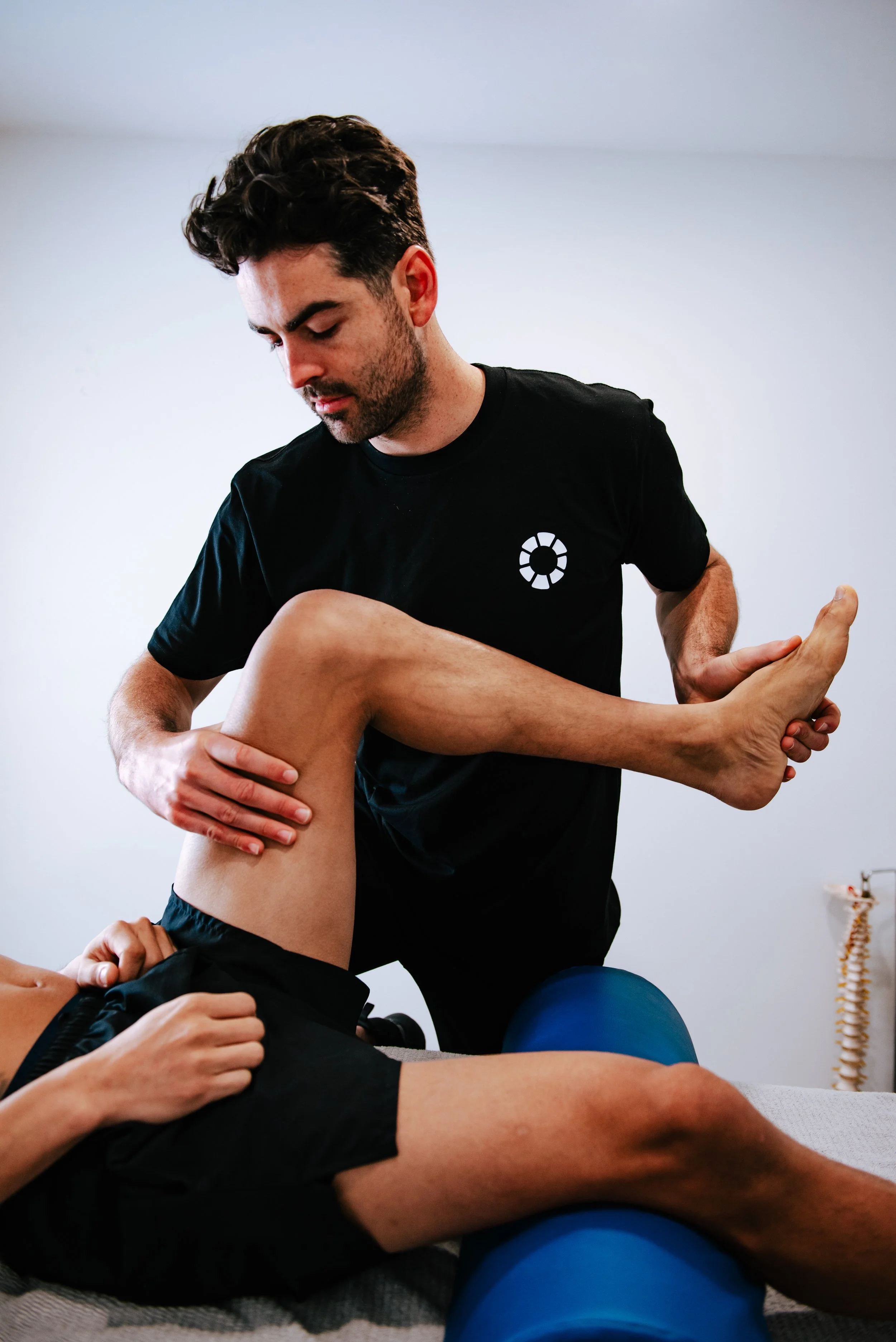Knocked Down by Knee Pain? Understanding and Preventing Knee Injuries in Boxing
Boxing is a sport of explosive movements, rapid footwork, and powerful strikes—all of which rely heavily on the knees. As vital components of a boxer's kinetic chain, the knees endure tremendous strain, making them susceptible to various injuries.
In this blog, we’ll delve into the most common knee injuries in boxing, their causes, how they affect performance, and how we at Mixed Osteo help boxers recover and prevent these issues so they can stay in the fight.
Common Knee Injuries in Boxing
Although boxing primarily focuses on the upper body, the lower body plays a critical role in generating power and maintaining stability. The repetitive twisting, pivoting, and impact involved in the sport can lead to knee injuries such as:
Patellar Tendonitis (Jumper’s Knee):
Repeated stress on the patellar tendon can cause inflammation and pain just below the kneecap, often resulting from footwork drills or explosive movements.Ligament Strains and Tears:
The knee’s ligaments (ACL, MCL, PCL, LCL) provide stability during movement. Sudden changes in direction or improper landing during training can strain or tear these ligaments, with the ACL being particularly vulnerable.Meniscus Tears:
Pivoting on one leg while throwing a punch can place stress on the meniscus, leading to tears. This injury often causes pain, swelling, and difficulty moving the knee.Iliotibial (IT) Band Syndrome:
Overtraining or poor biomechanics can irritate the IT band, causing pain on the outer side of the knee, especially during footwork or running drills.Knee Bursitis:
Repeated kneeling or impact during training can inflame the bursae (fluid-filled sacs) in the knee, leading to swelling and discomfort.
How Do Knee Injuries Affect Boxers?
Even a minor knee injury can significantly impact a boxer’s performance by:
Limiting Mobility: Making it difficult to pivot, move laterally, or maintain a stable stance.
Reducing Power: The knees are essential for transferring energy from the lower body to the upper body during punches.
Affecting Balance: Instability in the knee can compromise defensive and offensive movements.
Increasing the Risk of Secondary Injuries: Compensating for knee pain can place additional stress on the hips, ankles, or lower back.
Causes of Knee Injuries in Boxing
Several factors contribute to knee injuries in boxing:
Overuse and Overtraining:
Repetitive movements without adequate rest can strain the knee structures.Improper Footwork:
Poor technique during pivots, punches, or defensive movements can place unnecessary stress on the knees.Imbalances and Weakness:
Weakness in the quadriceps, hamstrings, or glutes can lead to poor knee stabilisation.Sudden Movements:
Rapid changes in direction or awkward landings can cause acute injuries like ligament tears.Inadequate Recovery:
Neglecting warm-ups, cool-downs, and recovery routines increases the likelihood of injury.
Mixed Osteo’s Approach to Knee Injury Treatment and Prevention
At Mixed Osteo, we take a personalised approach to treating knee injuries in boxers, focusing on recovery, rehabilitation, and prevention:
1. Comprehensive Assessment
We assess the entire kinetic chain, identifying the root cause of knee pain. This includes analysing footwork, biomechanics, and any muscle imbalances that may contribute to the injury.
2. Manual Therapy
Hands-on techniques such as soft tissue therapy, joint mobilisation, and functional manual reactions (FMR) are used to alleviate pain, reduce swelling, and improve joint mobility.
3. Strength and Conditioning
Rehabilitation exercises focus on strengthening the quadriceps, hamstrings, glutes, and calves to improve knee stability and resilience. This includes functional drills that mimic boxing movements.
4. Biomechanics Correction
We work with boxers to refine their footwork and punching technique, reducing unnecessary strain on the knees.
5. Injury Prevention Strategies
Education is key to long-term health. We provide guidance on proper warm-ups, recovery protocols, and injury prevention exercises tailored to boxing.
Preventing Knee Injuries in Boxing
Prevention is always better than cure. Here are some tips to keep your knees healthy in the ring:
Warm-Up Thoroughly: Dynamic stretches and mobility exercises prepare the knees for high-intensity activity.
Strengthen Supporting Muscles: Focus on building strength in the hips, quads, hamstrings, and calves.
Refine Your Technique: Work with a coach to ensure proper footwork and movement patterns.
Incorporate Recovery Days: Allow your body to repair and rebuild between training sessions.
Use Proper Footwear: The right shoes can reduce impact and improve balance.
Knee injuries are common in boxing but don’t have to derail your training or performance. With the right approach to treatment, rehabilitation, and prevention, boxers can recover from knee pain and return to the ring stronger than ever.
At Mixed Osteo, we help athletes overcome injuries and build resilience. If you’re struggling with knee pain or want to improve your performance, book an appointment with us today. Let’s keep you fighting fit!


